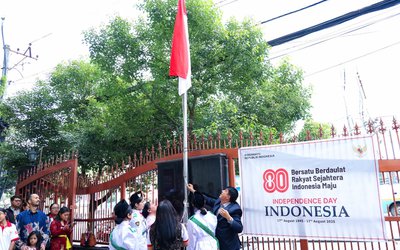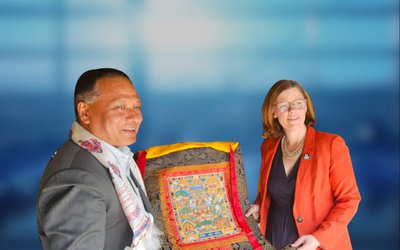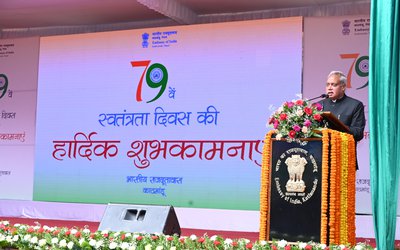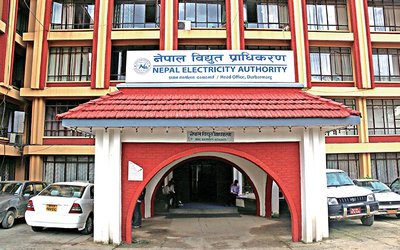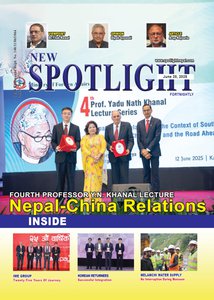Background
The history of human evolution shows that cultural identity has developed through human creativity and the creation of heritage, serving as significant evidence of human civilization. Human accomplishments in music, literature, painting, sculpture, and architecture have evolved into a rich cultural heritage that is now a valuable source of knowledge and inspiration for modern society.
The establishment of the International Council of Museums (ICOM) in 1946 and the International Council on Monuments and Sites (ICOMOS) in 1965 marked the beginning of global efforts in heritage and museum conservation after World War II. The Universal Declaration of Human Rights (UDHR) adopted by the United Nations in 1948, recognized social and cultural rights as essential human rights, with Articles 22 and 27 emphasizing the importance of cultural heritage for human dignity and personal development.
These rights place a responsibility on states to protect cultural heritage for the benefit of society as a whole. The Hague Convention for the Protection of Cultural Property in the Event of Armed Conflict, established in 1954, set standards for preserving cultural heritage during times of war, marking a significant step in international heritage conservation. The International Council on Monuments and Sites (ICOMOS) also plays a key role in safeguarding sites of cultural heritage such as monuments, buildings, and landscapes. Despite the focus on physical infrastructure in the era of global development, efforts to preserve cultural heritage have remained a priority under the umbrella of the UDHR.
The evolving development approach played a crucial role in creating new comprehensive international documents for cultural heritage conservation. This led to the formulation of two significant documents: the 1970 UNESCO Convention on the Means of Prohibiting and Preventing the Illicit Import, Export and Transfer of Ownership of Cultural Property, and the UNESCO Convention Concerning the Protection of World Cultural and Natural Heritage in 1972.
These international agreements were pivotal in establishing a global framework for recognizing heritage as a vital component of human societal development. They defined tangible heritage to include architectural works, monuments, paintings, structures, archives, buildings, caves, and shelters of exceptional universal value from historical, artistic, or scientific perspectives.
Both conventions expanded efforts for cultural heritage conservation on national and international levels. The 1990s marked a significant shift in understanding the relationship between cultural heritage and human society within the broader context of development. This era saw a transition towards the concept of human development, emphasizing the connection between heritage and culture as essential elements of development.
For instance, the World Commission on Culture and Development, established by UNESCO in 1992, released a groundbreaking report in 1995 highlighting the overlooked benefits of integrating culture and economic development globally. This report spurred initiatives to incorporate culture, heritage, and diversity into development processes, ultimately influencing the creation of the Convention on the Protection and Promotion of the Diversity of Cultural Expressions by UNESCO in 2005.
The period from the 1970s to the 2000s is recognized as a foundational era for international heritage conservation, where key principles were developed to underscore the scope, relevance, and significance of heritage. These efforts laid the groundwork for ongoing endeavors to preserve the importance and value of heritage and integrate these aspects into global policy.
At its 38th General Conference in 2015, UNESCO adopted the “Recommendation concerning the Protection and Promotion of Museum and Collections, their Diversity and their Role in Society.” That same year, the United Nations endorsed the Sustainable Development Goals (SDGs), which included heritage conservation as a key component of the global development agenda. For instance, Target 11.4 within Goal 11 calls for increased efforts to preserve and protect the world's cultural and natural heritage.
In addition to Target 11.4 under Goal 11, other SDGs, such as Goal 4 on education and Goal 8 on sustainable economic growth, indirectly support heritage preservation by promoting cultural education and sustainable tourism development. These goals highlight the importance of heritage conservation in sustainable development. With the adoption of the SDGs by the UN in 2015, heritage conservation gained further recognition within mainstream development agendas.
A more recent initiative in this direction is the development of ISO standards for cultural heritage preservation, aimed at enhancing existing international efforts in heritage conservation. The ISO Technical Committee (ISO/TC 349) was established in 2024 to draft new global standards that unify and improve international heritage conservation efforts.
Aspiration from ISO/TC 349
The establishment of ISO Technical Committee (ISO/TC 349) represents a significant global effort to create standardized approaches for cultural heritage conservation. Proposed and led by China, this committee was officially approved by the International Organization for Standardization (ISO) in March 2024, making it the first ISO technical committee dedicated solely to heritage conservation since the organization's inception in 1947.
ISO/TC 349 is expected to play a crucial role in building international consensus by developing terminology, principles, and operational methods for cultural heritage preservation. The development of shared global standards will not only establish a common scientific basis for conservation but also enhance the quality and consistency of heritage practices. Additionally, it aims to facilitate the exchange of technical knowledge, promote research on innovative technologies, and support their practical implementation in the field.
ISO, a non-governmental international organization, is widely recognized for its work in establishing global standards in various areas such as quality of goods and services, environmental practices, management, and safety. The process of creating these standards typically begins with a formal proposal outlining the need for a specific standard in a particular sector.
Upon determining the importance and relevance of the proposed standard, ISO establishes a technical committee responsible for developing and finalizing the standard. The main objective of ISO/TC 349 is to promote a global consensus on the preservation of cultural heritage by creating standardized international terminology and practices for managing cultural heritage, including the safeguarding and restoration of cultural artifacts, as well as the materials, techniques, and equipment used in heritage conservation. This committee represents the initial step towards establishing universally recognized ISO standards for the conservation of cultural heritage.
Through ISO/TC 349, the heritage sector will benefit from a global standard that focuses primarily on five key areas of cultural heritage conservation: terminology, Deterioration and Illustration, Restoration Techniques for Inorganic Porous Cultural Relics (such as stone, wall painting, and earthen sites), Specification for Seismic Protection of Museum Collections, and Environmental Monitoring for Museum Collections. While the first three areas concentrate on cultural heritage conservation, the remaining two are tailored to the museum context.
ISO/TC 349 will also assess and incorporate relevant initiatives and draw upon the expertise and experiences of various international organizations involved in heritage conservation, such as UNESCO, ICOMOS, and ICOM, in addition to active participation from ISO member states. This collaborative, multi-stakeholder approach is expected to enhance the effective implementation of conservation principles, facilitate new research opportunities, and promote global knowledge exchange in heritage preservation. Consequently, the standards developed by ISO/TC 349 are anticipated to represent a significant milestone in the advancement of international heritage conservation practices.
In the context of Nepal, a country rich in cultural heritage but facing various challenges such as the threat of earthquakes, repatriation, and restoration of illicit trafficked cultural objects, the development of conservation standards by ISO/TC-349 in this area is expected to play a crucial role in preserving our cultural heritage. The devastating earthquake in 2015 damaged 920 cultural heritages, including 120 from world heritage sites, highlighting the need for conservation efforts. Additionally, thousands of stone heritage sites located in open spaces for hundreds of years are at risk of environmental degradation in Nepal.
The standards developed by ISO/TC 349 could provide Nepal with scientific, consistent, and internationally accepted guidelines to better preserve, restore, and protect its diverse cultural legacy. By leveraging the experiences and practices of different countries in the cultural heritage conservation sector, including Nepal, ISO/TC 349 has the potential to create a common standard that safeguards invaluable cultural heritage.
China has emerged as a global leader in the heritage sector, particularly in museum development and cultural heritage promotion. The number of museums in China has grown significantly from fewer than 2,000 in 1995 to over 7,000 today. The adoption of a free entry policy for citizens in museums in 2008 has further enhanced public accessibility, with over 90% of museums in China implementing this policy. The high number of museum visits in 2024, exceeding the nation's total population, demonstrates the strong public connection to cultural heritage and the success of state policies in fostering this connection.
The increasing public engagement with heritage through museums in China serves as a model for other countries with significant heritage but limited public involvement. This achievement not only strengthens cultural ties but also contributes to economic and cultural activities.
Nepal, for example, can benefit from participating in this forum by exchanging experiences and expertise in cultural heritage conservation. The UNESCO World Heritage List currently includes 1,223 sites, with 231 natural heritage sites, 952 cultural heritage sites, and 40 mixed heritage sites. Italy has the most World Heritage sites with 60, followed closely by China with 59. China's significant investment and progressive policies have positioned it as a leader in national and international heritage conservation, demonstrating a strong commitment to sustainable preservation and a deep understanding of the value of cultural heritage. China's experience and dedication in the heritage sector are expected to contribute to the work of ISO/TC-349.
Nepal, as a member of this committee, can benefit from sharing its experiences and expertise while learning from other countries in heritage conservation. Nepal can share its experiences in post-disaster heritage reconstruction, such as efforts after the 2015 earthquake, and learn from global best practices in conservation techniques and environmental monitoring. Additionally, insights on restoring illicitly trafficked cultural heritage will be valuable in developing common standards. The active participation of countries with diverse cultural heritage in ISO/TC349 is expected to result in globally shared standards that enhance international collaboration and provide a unified approach to effective heritage conservation worldwide.
Conclusion
The development of global heritage conservation has been influenced by decades of institutional growth and international collaboration. The establishment of organizations like ICOM and ICOMOS, along with adherence to international declarations such as the Universal Declaration of Human Rights post-World War II, marked the beginning of a structured and rights-based approach to protecting cultural heritage. Over time, various global frameworks, conventions, and national policies have further solidified the importance of heritage preservation in human development.
A key realization from these global efforts is that cultural heritage serves not only as a reflection of human creativity and identity but also as a valuable asset for scientific knowledge, social cohesion, and sustainable development. The creation of ISO Technical Committee 349 (ISO/TC 349) is a significant step in this ongoing process, aiming to establish a scientific, standardized, and universally accepted standard for heritage conservation. By standardizing terminology, principles, restoration methods, environmental monitoring standards, and seismic protection guidelines, ISO/TC 349 is poised to enhance the quality, consistency, and global collaboration in the cultural heritage field.
The collaboration within the ISO technical committee presents a rare opportunity to consolidate decades of knowledge, best practices, and innovations into a forward-looking global framework for heritage preservation. China's proactive role in expanding its museum sector and leading the initiation of ISO/TC 349 highlights the increasing global emphasis on cultural heritage.
The active participation of heritage-rich countries like Nepal in ISO/TC 349 demonstrates a shared commitment to safeguarding the legacy of the past while preparing for future challenges. The committee's work is expected to establish a common standard and consensus that will serve as a valuable resource for nations striving to protect their cultural assets amidst modernization, environmental threats, and technological changes. The collective efforts through ISO/TC 349 have the potential to be a significant milestone for resilient, inclusive, and sustainable cultural heritage, ensuring that the knowledge, beauty, and identity of human civilizations endure for generations to come.
Ghimire can be reached at prakashdocument@gmail.com


